Artefact 247
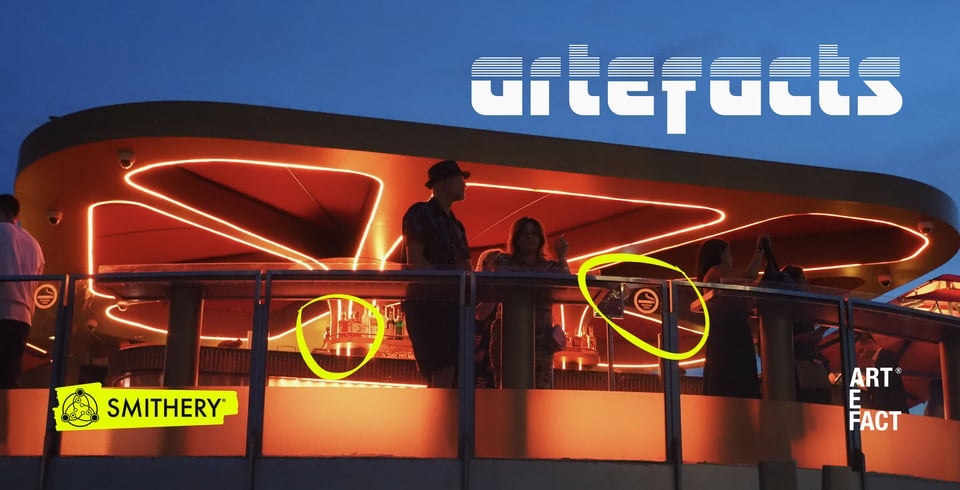
I only know
what I think
if I write it down…
I was grabbed by this quote in the excellent interview Paul Graham Raven did with Cameron Tonkinwise (first part here).
As with all scraps of things that create an itch, it made it to the whiteboard that sits on the back wall of the office, above the ‘physical desk’. No devices over there, just the lo-fi material world of cards, pens, cutting matts, blades and more. It’s an idea I stole years ago from Austin Kleon.
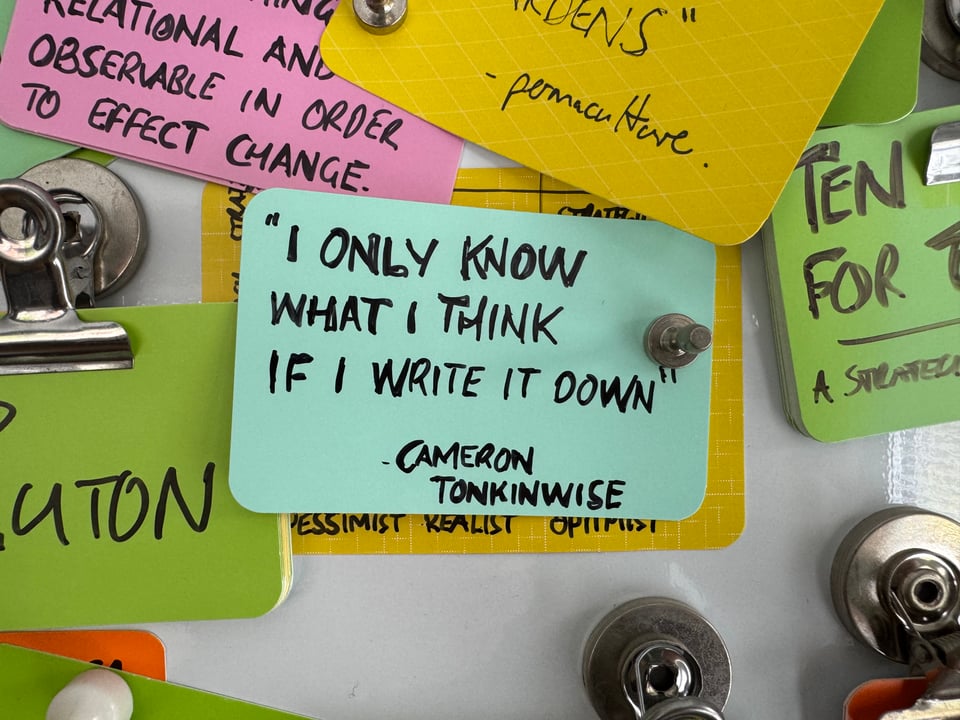
These can be quotes, idle thoughts, stacks of nested ideas, diagrams, projects that might yet happen. They are shipped to the board because they are worth doing something about.
Yet I have realised I am not doing anything about the majority of them. At the very least, they deserve a decent burial in a blog, or mention in this newsletter.

Here is a commitment then, of sorts. For the next while I’ll explore some of the ideas from the board in this newsletter, perhaps related to something else that’s going on project or client wise. Let’s try one out.
A workshop about workshops
Last month I ran something new, though it was based on two decades of work - a workshop about workshops, for the good folks of the Nesta Discovery team. You can read more about it here in lots of detail:
Kaleidoscopes - Mechanisms-for-meaningful-meetings
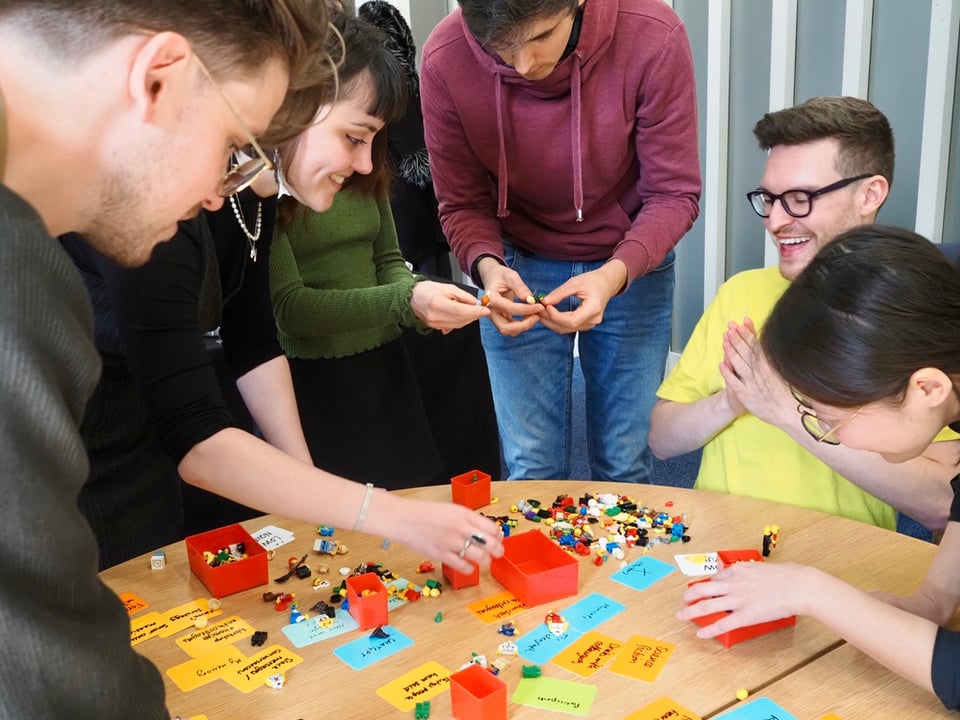
Actually, before I go on - now that this workshop is a fully formed thing, I am very happy to run it again and again for others.
I had forgotten in the last couple of years (given the general size and length of projects I have been working on) how much value is in short, sharp bursts of things, so I am definitely looking to do more of that kind of session this year.
Reply to this email if you or your team might be interested.
Advertisement over.
Agentive Workshop Assistance… or hinderance?
At some point during the Nesta workshop, I started drawing out a model that I had first noted down on a card quite a while ago as it turns out. As I went searching for it on the board, this is what I found:
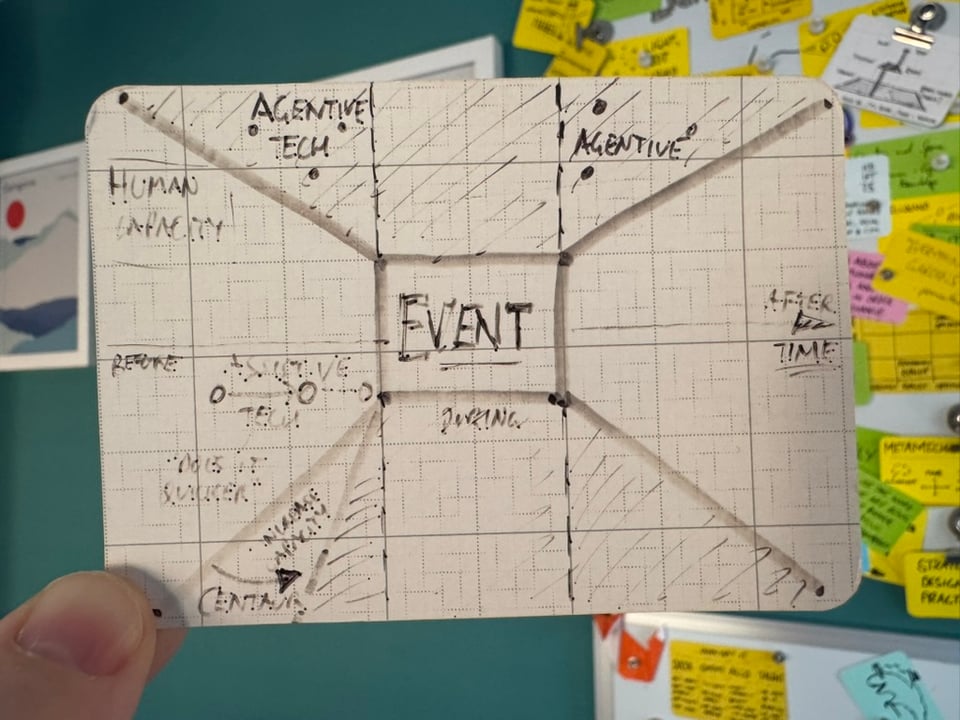
I didn't really thing it was that old, until I searched in my photo history and found a picture I took of it back in October 2017:
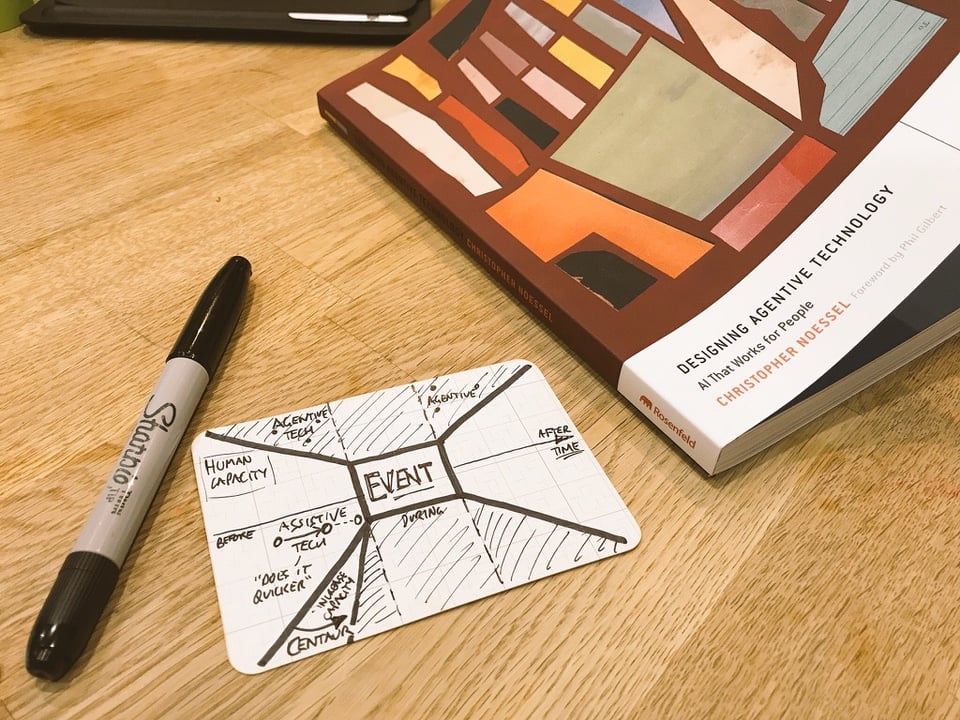
What does it MEAN though, I hear you ask?
Well, it came to me when to reading Christopher Noessel’s book ‘Designing Agentive Technology’. I was interested in what made ‘agents’ different from other technologies, in ways that supported human activities. Which sounds very now for 2017, but there we go – I seem to have had views on this for a while.
To explain it now, I have undertaken some Artefact Card restoration - essentially retracing the sketch from eight years ago with pens to help unlock what I was thinking then and what I might think now.
[Related to Cameron’s point from the top - I only remember what I thought if I write it down again]
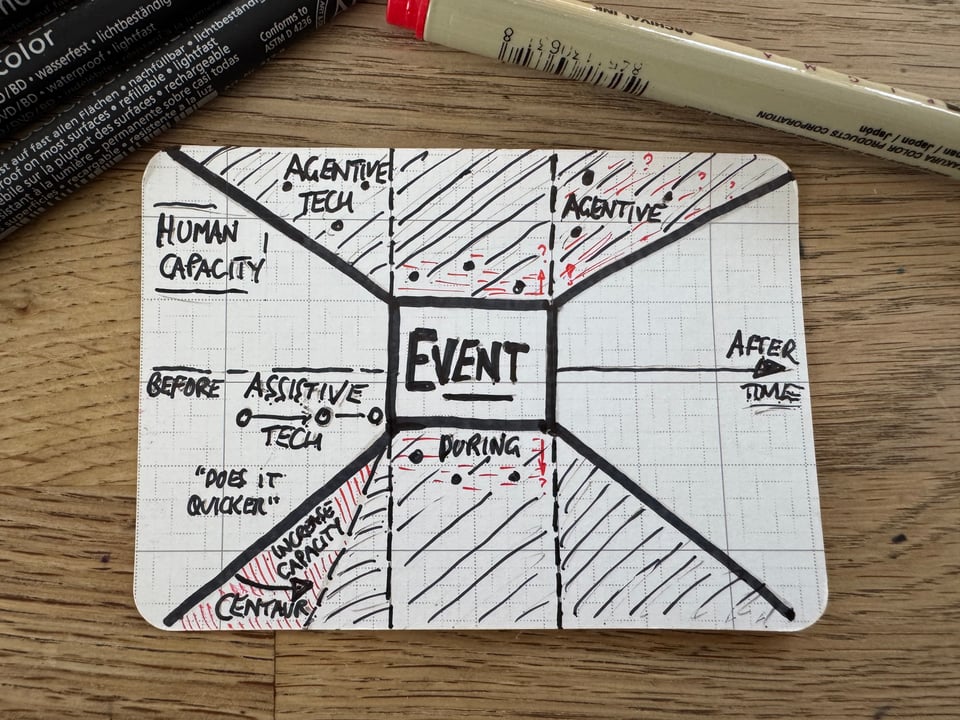
The basic structure is before, during, and after an event. This could be a meeting, a workshop, a presentation.
The further away you are from the event, the more capacity humans have to do something about it. For instance, a month out you will have lots of preparation time. A day before, not so much.
The day following a workshop, you’ll be able to do a little of the follow-up work. A week after that, you should have been able to do a lot more.
Thinking back to the early days of what Christopher was describing as artificial narrow intelligence, I was interested in the little ways these agents might stretch the capacity and capability through this before/during/after model.
For example:
BEFORE: Can agents help you identify a good time and place to hold a workshop? Can they help you choose the best exercises from your toolkit? Can they tell you who might be good at tackling the issue of concern?
DURING: As ideas come up in the session, can the agent surface new information on the fly? Can it capture and attribute ideas and commitments?
AFTER: Can the agents analyse and synthesise outputs? Can it structure next steps and workflows? Can it create a meaningful report that outlines the session in a way that all participants can recognise and agree with?
Of course nowadays, compared to 2017, we have lots of available tools that we can use to test these ideas out.
And a lot of the time (whisper it) they don’t really work.
For instance, last year with The STEPS Collective, I recorded a workshop we did. Seven voices in a room, with different views and ideas around a topic. I had it transcribed through Otter.ai, and tagged all the seven different voices. Then I dropped it into ChatGPT and asked it to produce a summary of what was discussed, and what the seven different people thought.
ChatGPT would not, no matter how I prompted it, acknowledge that there were more than four different people in the conversation. It became very hard to trust any of the conclusions it came to as a summary, because of this fundamental weakness.
Yet if someone who wasn’t there had read the summary, what conclusions would they have drawn? That these four voices were loudest? That they had the most interesting points?
There are other examples of the Before/During/After framework where we could discuss the efficacy of agentive technology, but rather than spend six thousands word doing that, what I’m beginning to play with is the concept of cognitive debt.
Where technical debt for an organisation is “the implied cost of additional work in the future resulting from choosing an expedient solution over a more robust one”, cognitive debt is where you forgo the thinking in order just to get the answers, but have no real idea of why the answers are what they are.
Have you really thought about what the question is etc etc.
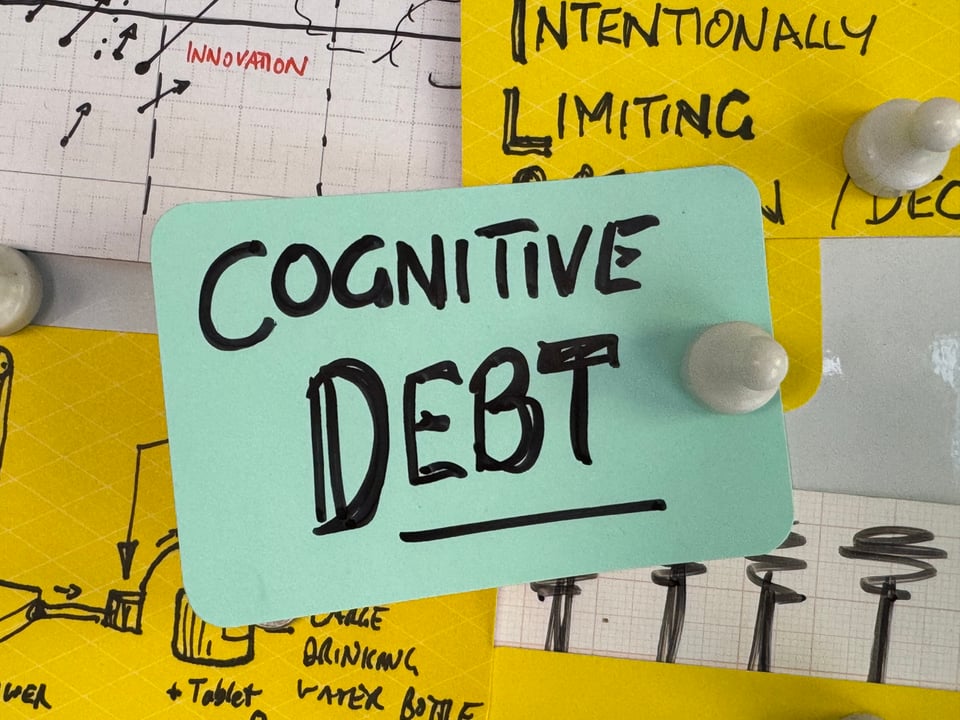
Sometimes, this won’t really matter at all. It is low jeopardy if it goes wrong in isolation, and someone will catch it. Yet sometimes, it really will matter a lot. And the organisation in question will struggle to understand how that answer got in there in the first place.
More soon, perhaps, on this.
As an exercise, finding a card on the board was fun and useful for me, and hopefully interesting for you. If I am lucky, I’m remember what it was I was thinking at the time that I wrote the card. And perhaps if I am very lucky, I won’t and have to get to something better.
Let me know what from the board you’d like to hear about next (there are already requests on Linkedin for a few in particular).
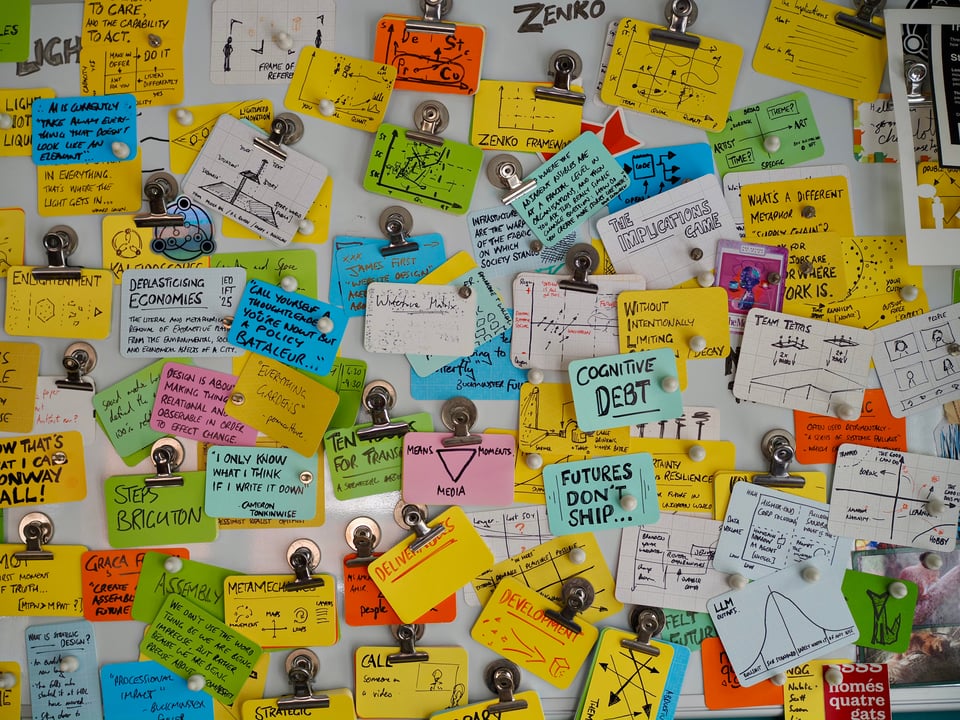
Other bits and bobs
The fourth law of Assemblage Space: There is no cone.
Mucking about in the Cardstock backchannel. The next meetup is today, if you’re about.
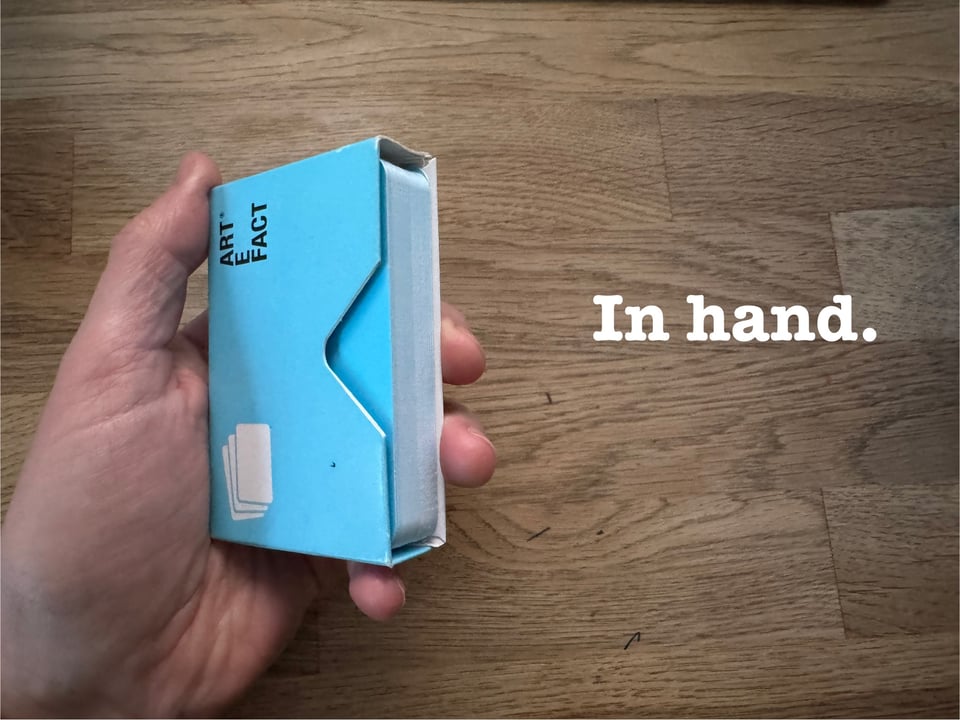
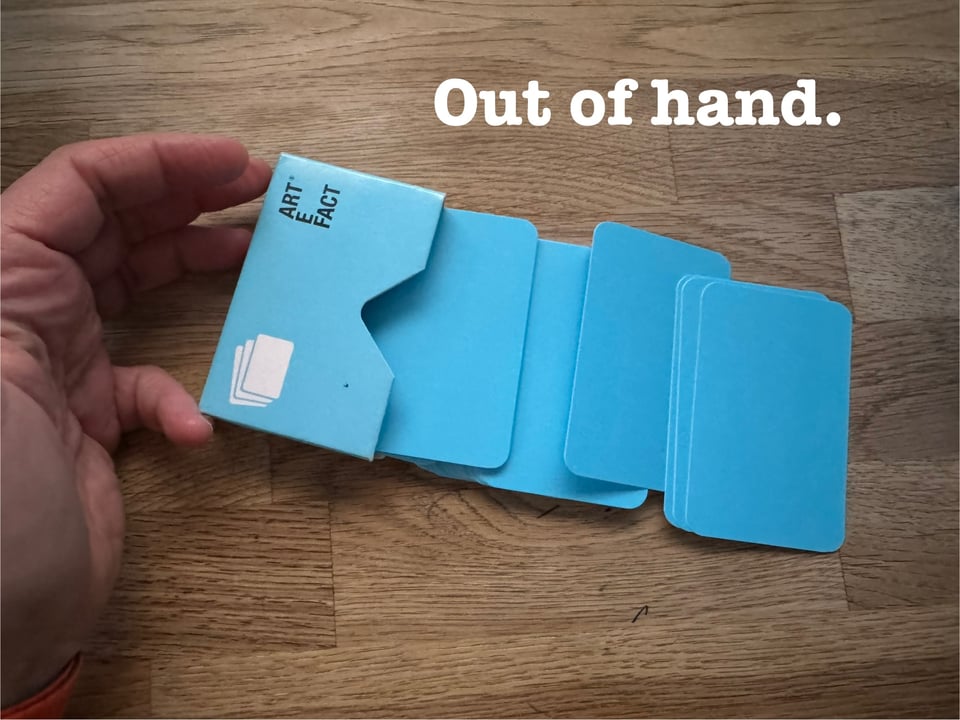
The next STEPS Collective monthly meet-up is on Citizen Design, and is hosted by Dr Rob Phillips - come and be a STEPS Citizen for an hour on Friday 9th May.
STEPS Monthly Meet-up - "Citizenship" · Zoom · Luma
These monthly meet-ups are for sharing new ideas, experiments, events and more. Each month there will be one-word theme. This month that theme is…
And if you want to catch up on the last session featuring Ida Persson & Jayavanthi Gayathri on ‘Design Shifts’, then that’s here.
OK, that’s it for today I think. Happy Friday and that.
John